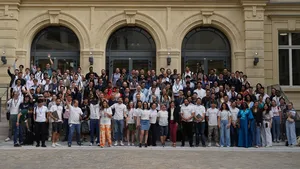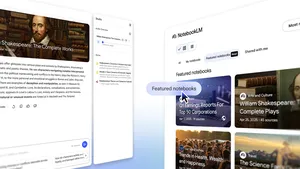How we are using AI for reliable flood forecasting at a global scale
People turn to Google for accurate and helpful information during crises to help them protect themselves and their families. Floods are the most common type of natural disaster and nearly 1.5 billion people, or some 19 percent of the world population, are directly exposed to substantial risks from severe flood events worldwide. Flooding also exacts an immense material toll, causing around $50 billion in annual global economic damages.
For most of history, accurate flood forecasting at scale was not possible due to the complexity of the problem and lack of resources and data. Given that only a small percentage of the world’s rivers are equipped with streamflow gauges, this provided an extra barrier to safety for people in developing countries as well as in underserved and vulnerable communities.
In a paper published today in Nature, we share how AI can help scale flood forecasting and bring help to parts of the world that are most impacted by climate change. We found that AI helped us to provide more accurate information on riverine floods up to 7 days in advance. This allowed us to provide flood forecasting in 80 countries in areas where 460 million people live. Where possible, we also provide forecasts in Google Search and Google Maps and via Android notifications.
The paper — described in more detail in our Research blog — demonstrates how AI-based global hydrologic technologies built by Google Research can significantly improve flood forecasting relative to the current state-of-the-art. This is even true for countries where reliable flood-related data is scarce, making it possible to expand flood forecasting on a global scale. Early warning systems can significantly help reduce fatalities, and having more lead time is extremely helpful for communities. With these technologies we extended, on average, the reliability of currently-available global nowcasts from zero to five days, and we were able to use AI-based forecasting to improve forecasts in regions in Africa and Asia to be similar to what are currently available in Europe.
Today, this information can be used by people, communities, governments and aid organizations to take anticipatory action to help protect vulnerable populations. Getting here hasn’t been easy, especially in regions where data is scarce and the impact of flooding is disproportionately large. Today, as we publish our latest paper, we thought we’d look back at some of the moments that shaped our journey in using AI to accurately forecast riverine floods:
Our first pilot in India taught us a valuable lesson
Our research work began with an initial pilot in India’s Patna region. Bihar, where Patna is located, is one of India’s most flood-prone states where a large part of the population lives under the recurring threat of devastating floods. Working with local government officials and using local real-time data, we created flood forecasts which we incorporated into Google Public Alerts in 2018.
A variety of elements — from historical events, to river level readings, to the terrain and elevation of a specific area — were fed into our forecasting models. From there, we generated maps and ran up to hundreds of thousands of simulations in each location to create the river flood forecasting models.
This approach was geared towards building highly accurate models for very particular locations, while our objective was to solve the problem at global scale. Our hypothesis was that machine learning could help address the challenge of scaling flood forecasting globally.
Kicking off collaborations with the research and scientific community
In 2019, we expanded our flood forecasting coverage 12-fold, and sent out 800,000 alerts to individuals in affected areas, while advancing our forecasting technologies.
As our team explored the potential of machine learning to create better flood forecasting models, we also began collaborating with academic researchers to combine the best hydrological physics-based flood simulations with our AI approach.
Based on our research, and the promising development of Long Short-Term Memory networks (LSTMs) to provide accurate flood predictions, we began envisioning a global end-to-end flood forecasting platform that provides trusted and reliable information, even in regions of the world that lack flood gauges.
Flood forecasting further expanded, but was limited by local data availability
Following the success of our initial pilot in India, we gradually expanded our forecasts across the country and into Bangladesh, covering 360 million people. At the time, we could provide forecasts up to 48 hours in advance, made possible by significant advancements in our forecasting technology. But in each case, our models relied on the availability of local streamflow data, making it difficult to scale forecasts to additional countries.
The pivot to a global AI-based flood forecasting model and expansion to over 80 countries
Recognizing the barriers to flood forecasting when relying on local data, and the advances in AI research, our team pivoted towards an ambitious global model. That required global data sources to train our model on using LSTM networks with the goal of predicting floods even in regions that don’t provide local streamflow measurements.
In 2022, we launched the Flood Hub platform, which provided access to forecasts in 20 countries — including 15 in Africa — where forecasting had previously been severely restricted due to the lack of global data.
A year later, in 2023, we added locations in 60 new countries across Africa, the Asia-Pacific region, Europe, and South and Central America, covering some 460 million people globally. As a result, forecasts are now freely available on the Flood Hub in real time to many vulnerable communities in developing countries. Thanks to advances in our global AI-based model, access to flood forecasting in Africa is now comparable to that of Europe.
Working in partnership
We know that in order to continue to advance science and research, and continue to make an impact on communities that need it the most, collaboration with the academic community, local governments and international organizations is key.
We work with many international aid organizations to provide actionable flood forecasts. We are collaborating with the World Meteorological Organization (WMO) to support early warning systems — and specifically the Early Warnings for All initiative, which aims to provide early warnings about climate hazards to everyone around the world by 2027. We are currently conducting a study to help understand how AI can help address real-world challenges faced by national flood forecasting agencies.
We also have a history of working closely with academics as well as with hydrological organizations, through annual workshops and efforts like our Caravan project to standardize and aggregate existing datasets.
Our journey is far from done
As the effects of climate change become more severe, floods often strike in unexpected places. Our goal is to continue using our research capabilities and technology to further increase our coverage, as well as forecast other types of flood-related events and disasters, including flash floods and urban floods. We also look into how to use AI to help address other climate adaptation challenges and more broadly into climate and sustainability.







